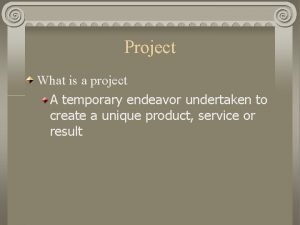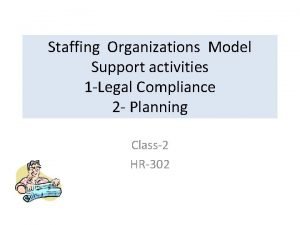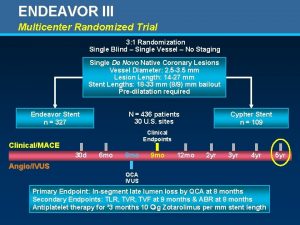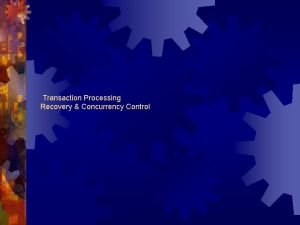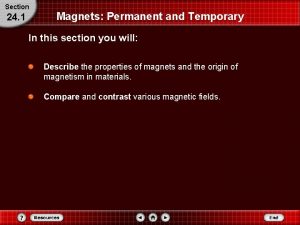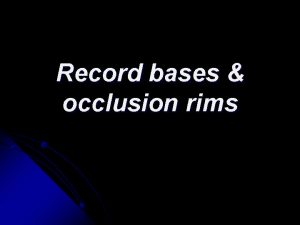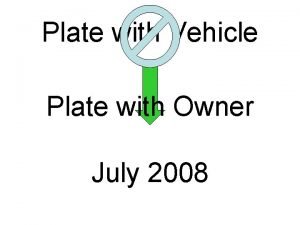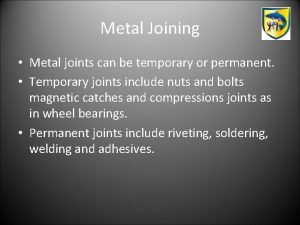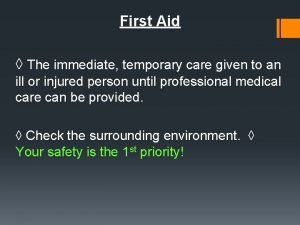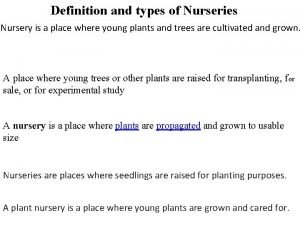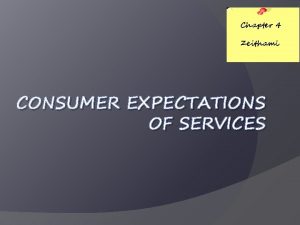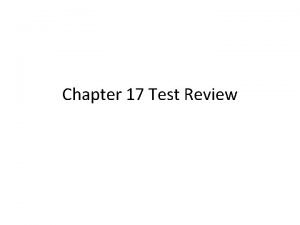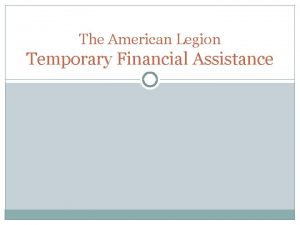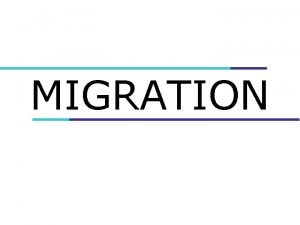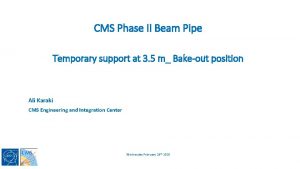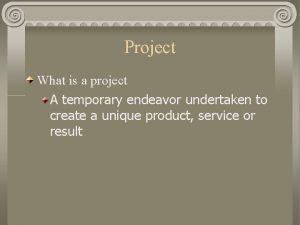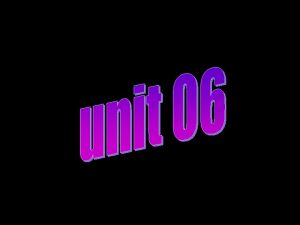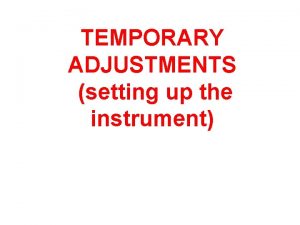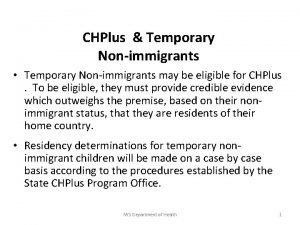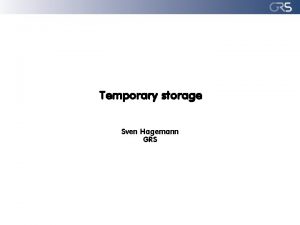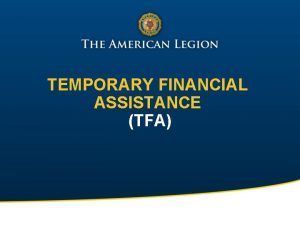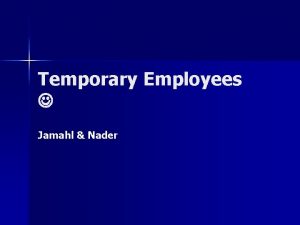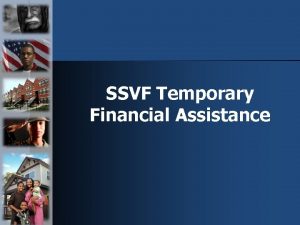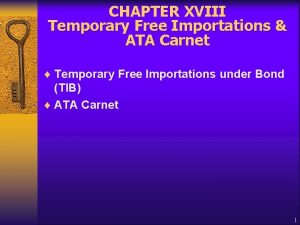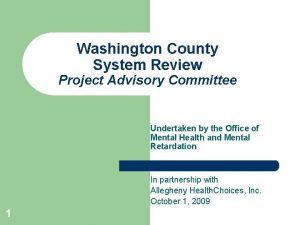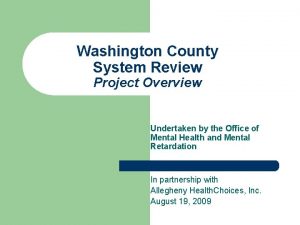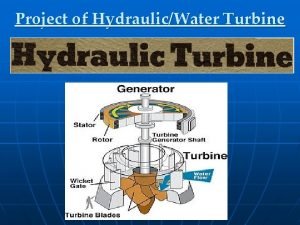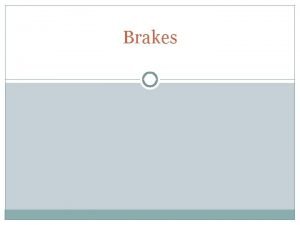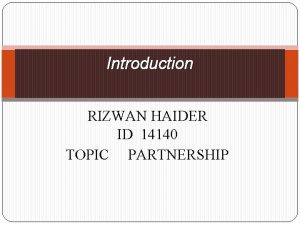Introduction DEFINATION Project A temporary endeavor undertaken to





























- Slides: 29

Introduction • DEFINATION : • Project : A temporary endeavor undertaken to create a unique product, service, or result • Temporary means that a defined timeframe exists (beginning and end). • Unique means that this project is different than previous activities. 1

• Project management : The overall planning, co -ordination and control of a project from inception to completion aimed at meeting a client’s requirements. • In order to produce a functionally and financially viable project that will be completed on time within authorized cost and to the required quality standards. 2

Examples of projects in the engineering and construction fields: • Upgrade of a building’s heating, ventilating, and air-conditioning system • The design and construction of a new building • Relocation of a manufacturing plant 3

• THE THREE PRIMARY OBJECTIVES: • Specification : Should define what outcome (goals) is expected from the project. • Delivery date: The time when the project is completed and handed over in a state that satisfies the requirements of the customer. 4

• Cost: Many project contractors are in business to make profits. 5

• A project is distinguished from ongoing business activities by several characteristics: Uniqueness (goals): A project is typically a specific mission (design and build a new building or plant ) Duration (time): A project tends to be of finite duration with a defined start date and a planned completion date. • A project also shares several characteristics with ongoing business activities: Budget (cost): A project, like most line functions, has a budget. 6

• Whatever the project is, the project manager will be responsible for managing his or her project to an on-time, technically sound result within the project budget. • If one word could describe The essence of project management it is responsibility 7

The construction industry • The construction industry is a generic term for a service industry that forms: Carrying out the planning, design, construction, maintenance, repair and demolition of structures. • Below is a range of building types together with some relevant examples: 8

• Commercial (hotels, retail stores, banks) • Offices (private and government use) • Education and research (schools, colleges, research facilities) • Health facilities (hospitals, surgeries) • Public and civil buildings (town halls, museums, transit stations, including airports, etc) • Infrastructure (utility services, railways, roads, bridges, tunnels) 9

• In terms of Gross Value Added (GVA), which is the economic measure of the total value of goods and services produced in the national accounts, the industry contributes 7– 9% annually. 10

Main Teams of the Project • The client’s team: A client may be an individual, partnership, group of persons, organization or business from the public or private sectors that seeks and pays for building works. 11

• The client’s team is made up of the following: 1. The design team: This team comprises of consultants from a range of backgrounds engaged by a client to specify and design schemes suitable for the client’s needs. 2. The construction team: The construction team is on the supply side of the industry, a term used to describe those parties appointed to physically construct a project in accordance with the design requirements. This includes: 12

• A main contractor (the builder) • Subcontractors to carry out works for the main contractor • Material suppliers (including manufacturers) The combination of design team members and a main contractor is often referred to as the building team. 13

3. The development team: Members of a client’s development team are an integral part of the client’s business, and are appointed to issue advice on technical, financial, legal, research and business planning matters for projects. This team also includes a geotechnical engineer who is engaged to carry out a site investigation 14

15

The Project Life Cycle (phases) • Every project has beginnings, a middle period during which activities move the project toward completion, and an ending (either successful or unsuccessful). A standard project typically has the following four major phases: 16

• INITIATION PHASE: A feasibility study is conducted to investigate whether each option addresses the project objective and a final recommended solution is determined. Issues of feasibility (“can we do the project? ”) and justification (“should we do the project? ”) are addressed. 17

18

• PLANNING PHASE: • This is also referred to as scope management. A project plan is created outlining the activities, tasks, dependencies and timeframes. • The project manager coordinates the preparation of a project budget; by providing cost estimates for the labor, equipment and materials costs 19

• IMPLEMENTATION (EXECUTION) PHASE : • The project manager uses the tasks and progress information to maintain control over the direction of the project by measuring the performance of the project activities comparing the results with the project plan. 20

• CLOSING PHASE: • During the final closure, or completion phase, the emphasis is on releasing the final deliverables to the customer. 21

22

23

24

Regulation and registration In Oman http: //www. mrmwr. gov. om/mrmwr/BOR. pdf 25

26

OMAN STANDARD DOCUMENTS FOR BUILDING AND CIVIL ENGINEERING WORKS http: //www. omran. om/Docs/Government%20 doc%20 for%20 CONSTRUCTION%20 General %20 Terms%20 and%20 Conditions. pdf Summary of some clauses: • ENGINEER AND ENGINEER’S REPRESENTATIVE. (1) Duties and Powers of Engineer (2) Duties and Powers of Engineer’s Representative 27

• CONTRACT DOCUMENTS: (1) Custody of Drawings and Specification (2) One copy of Drawings and Specification to be kept on site (3) Disruption of Progress (4) Delays and cost of delay of Drawings 28

• MAINTENANCE AND DEFECTS (1) Definition of Period of Maintenance (2) Execution of Work of Repair etc. , (3) Cost of Execution of Work of Repair etc. , 29
 Endeavor project management
Endeavor project management The crusades were military expeditions undertaken by
The crusades were military expeditions undertaken by The crusades were military expeditions undertaken by
The crusades were military expeditions undertaken by Staffing organization model
Staffing organization model Deathmi
Deathmi Catguru endeavor
Catguru endeavor Temporary behavior of atmosphere
Temporary behavior of atmosphere Temporary update problem in dbms
Temporary update problem in dbms Total station procedure
Total station procedure Difference between permanent magnet and temporary magnet
Difference between permanent magnet and temporary magnet Temporary record base
Temporary record base A hair form should be in proportion
A hair form should be in proportion South dakota temporary license plates
South dakota temporary license plates Types of permanent joint
Types of permanent joint Temporary wood joints
Temporary wood joints Difference between permanent magnet and temporary magnet
Difference between permanent magnet and temporary magnet The water cycle
The water cycle A scratch-pad for temporary recall.
A scratch-pad for temporary recall. Temporary care given to a person
Temporary care given to a person Nursery definition
Nursery definition Desired service expectations examples
Desired service expectations examples Charging by induction
Charging by induction Transitory service intensifiers
Transitory service intensifiers Remove superfluous hair by dissolving it at the skin line
Remove superfluous hair by dissolving it at the skin line Suppose two waves collide and the temporary
Suppose two waves collide and the temporary Epri iwc
Epri iwc The american legion temporary financial assistance
The american legion temporary financial assistance Temporary and permanent movements
Temporary and permanent movements Ddo template v4.0
Ddo template v4.0 Preext
Preext
